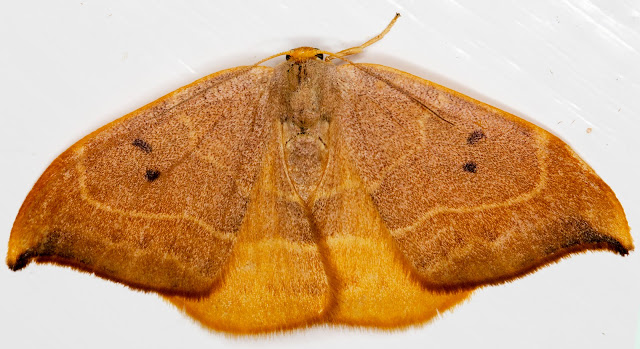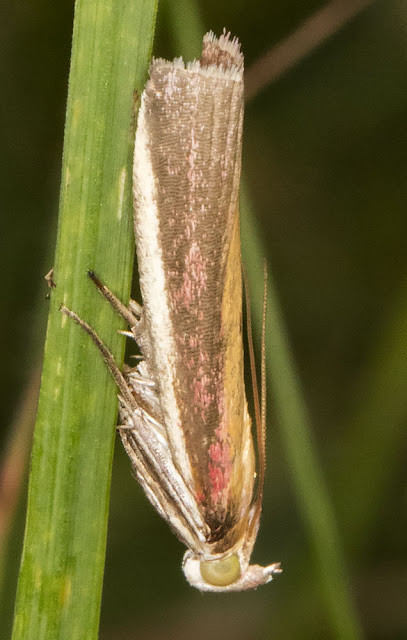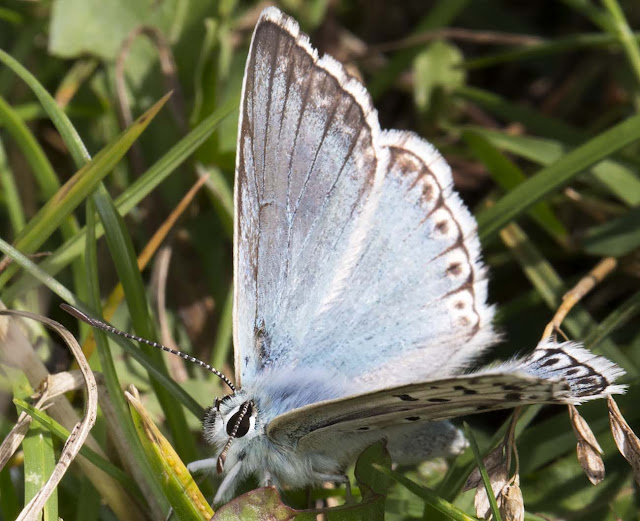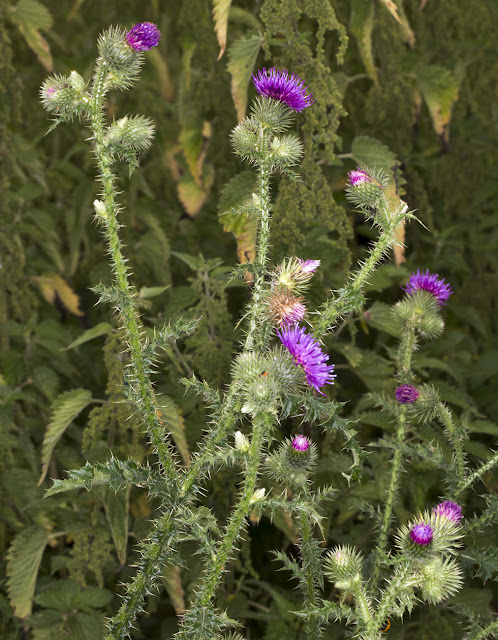 |
| Gatekeeper, Pyronia tithonus., on Wild Marjoram, Origanum vulgare. Hutchinson's Bank, 21 July 2015 |
Hutchinson's Bank is a chalk slope near New Addington, steep enough that you need to look forward to expending some effort to get around it all. There are paths along the top, the middle and the bottom, and at the end there is a small triangular wood. A little further up the road there is another area of chalk grassland known for its orchids.
Last year, when I walked around, the bottom path was little more than a muddy trench, but this time all was dry and pleasant. The chalk flora is lovely, and here is a typical specimen, a Wild Marjoram. It's aromatic, like so many of the Lamiaceae, and moths and butterflies love it. This butterfly is a Gatekeeper, and although this was supposed to be a plant post, as there is already a butterfly here I will show what the upper wing surface is like.
 |
| Gatekeeper, Pyronia tithonus. Hutchinson's Bank, 29 July 2015. |
It's quite small and quite colourful.
 |
| Nemophora metallica on a Field Scabious, Knautia arvensis. Hutchinson's Bank, 21 July 2015. |
There are lots of Scabiouses scattered around, Field and Small. This Field Scabious is being visited by a longhorn moth, Nemophora metallica, whose larvae feed on it.
 |
| Wild Parsnip, Pastinaca sativa. Hutchinson's Bank, 21 July 2015. |
OK, I will definitely cut back on the Lepidoptera now. This is a Wild Parsnip, which I do not see on every chalk bank. I haven't tried to pull up a root and expect I would be disappointed if I did.
 |
| Tufted Vetch, Vicia cracca. Hutchinson's Bank, 29 July 2015. |
Tufted Vetch - it's a cracca. That is an obscure pun. This pretty plant is quite common. I saw some at Leybourne Lakes, too.
 |
| Marsh Thistle, Cirsium palustre. Chapel Bank, 29 July 2015. |
In the
Leybourne Lakes post I mentioned the Marsh Thistle, comparing it unfavourably with a Welted Thistle. Well, here it is, in the other chalky area close to Hutchinson's Bank. It is quite characterful and interesting, and often grows in large groups, as you can see in the background of this photo. It's tall and skinny, and the flower heads are tacky to the touch rather than spiky. But those things do not make it pretty.
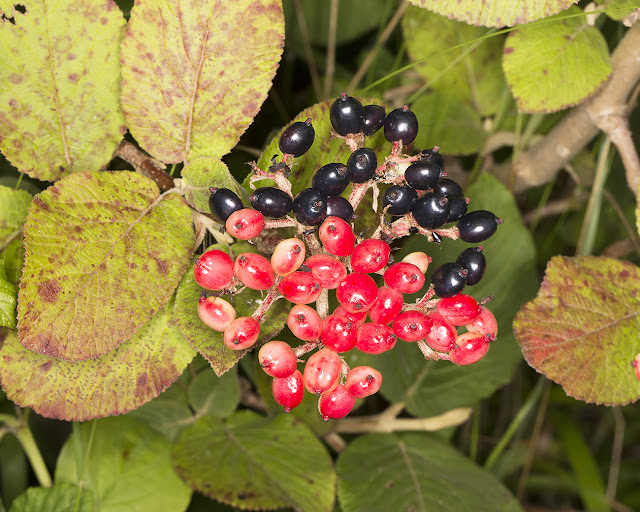 |
| Wayfaring-Tree, Verbena lantana. Hutchinson's Bank, 29 July 2015. |
Last for today, a typically multicoloured berry head of the Wayfaring-tree, one of our two wild Verbenas. It is a common shrub on the chalk, and a lovely sight at this time of year.


